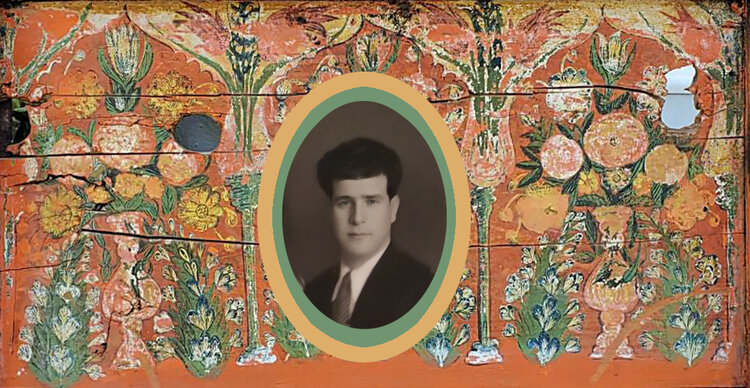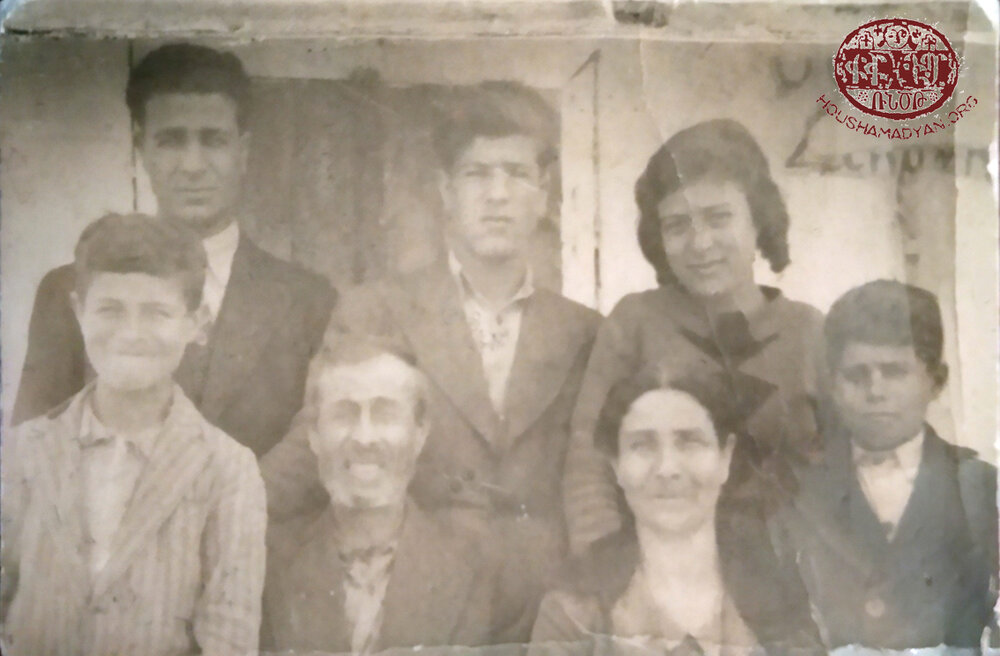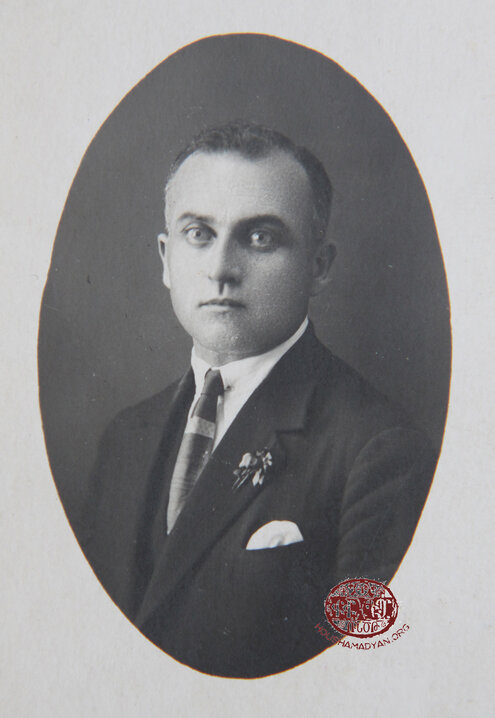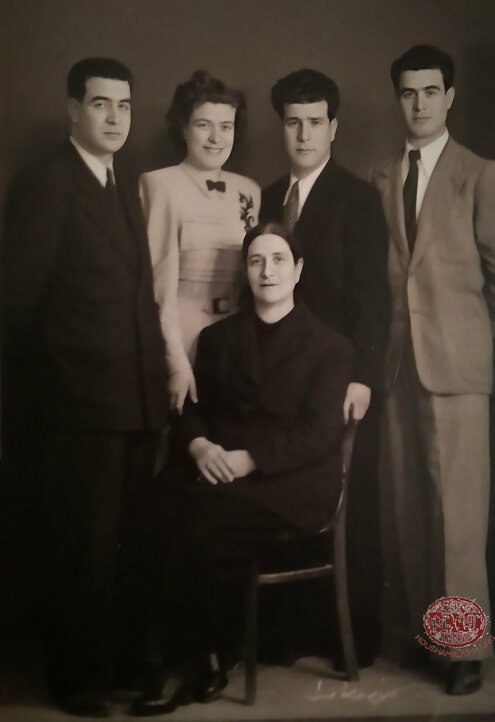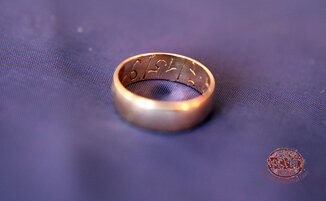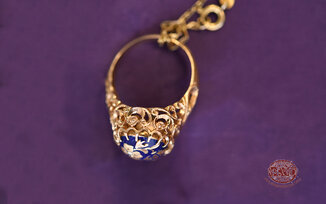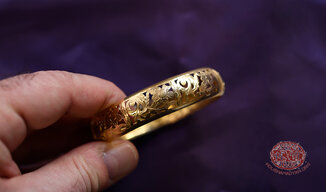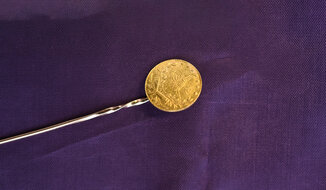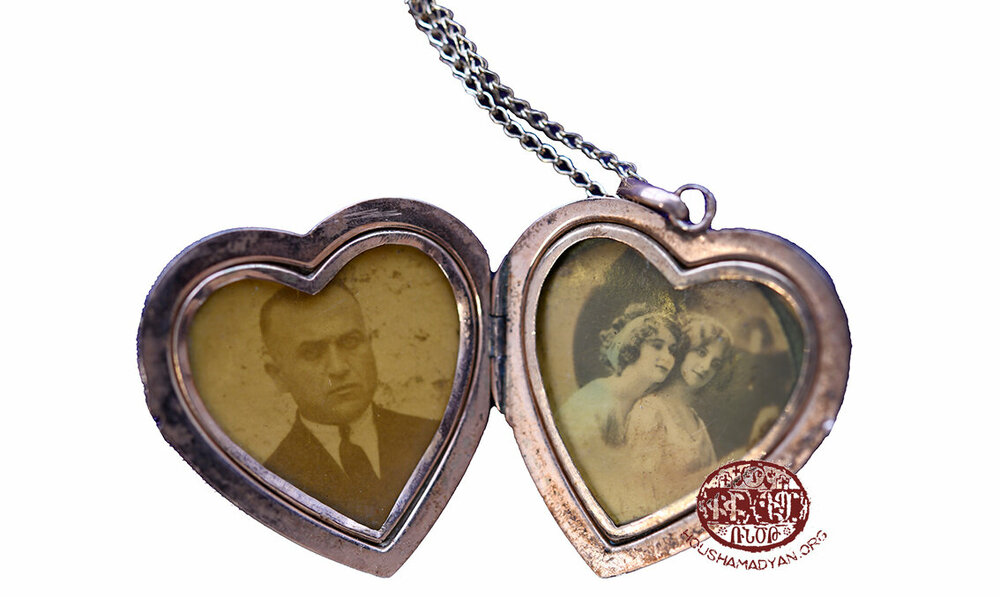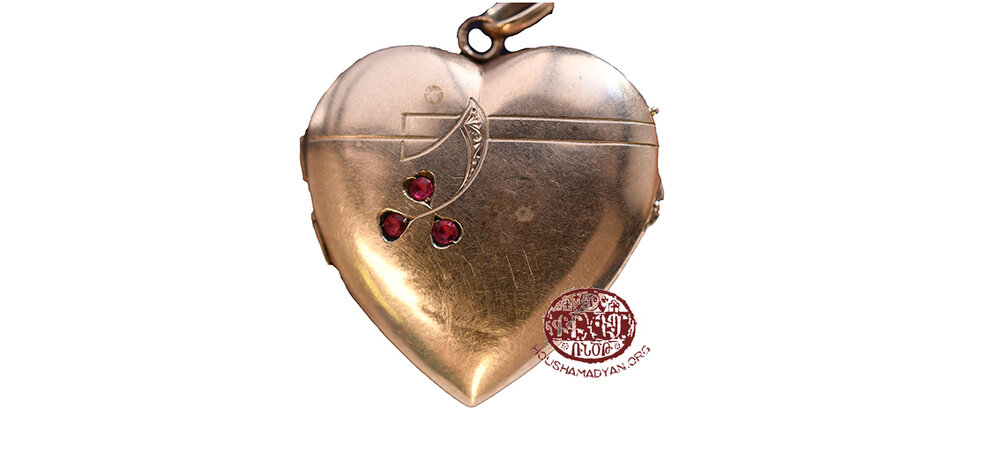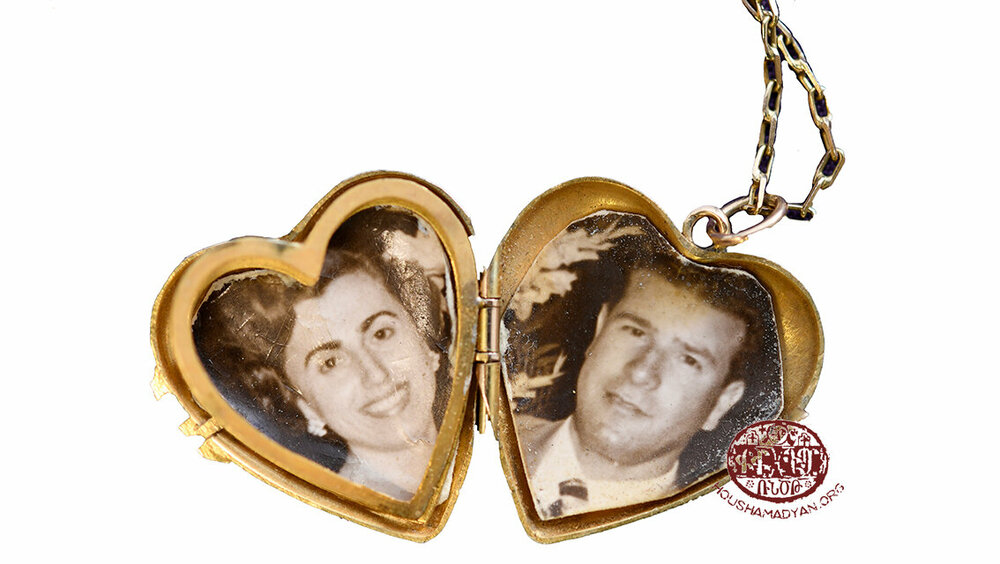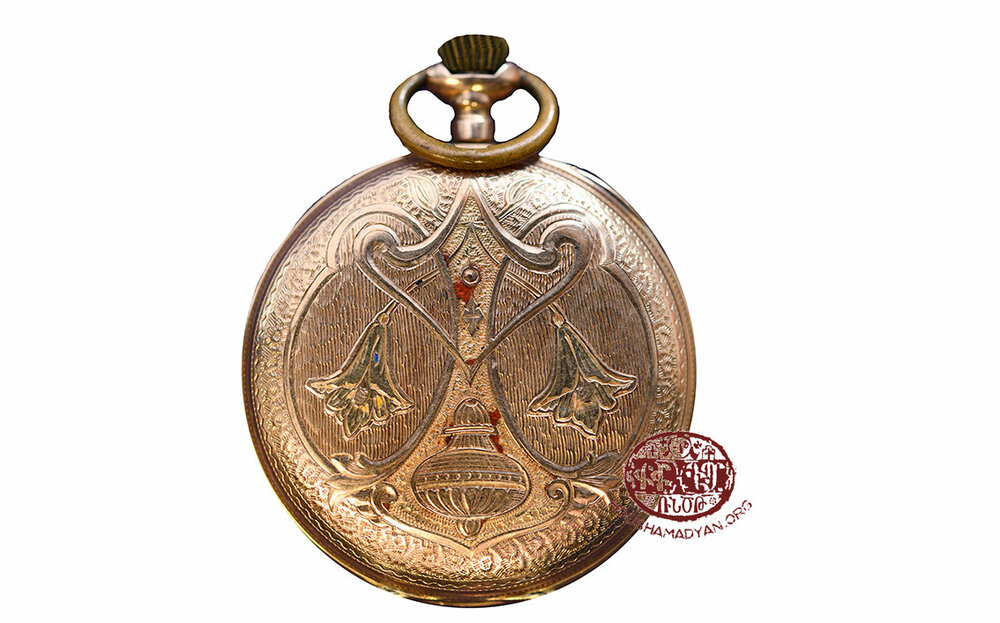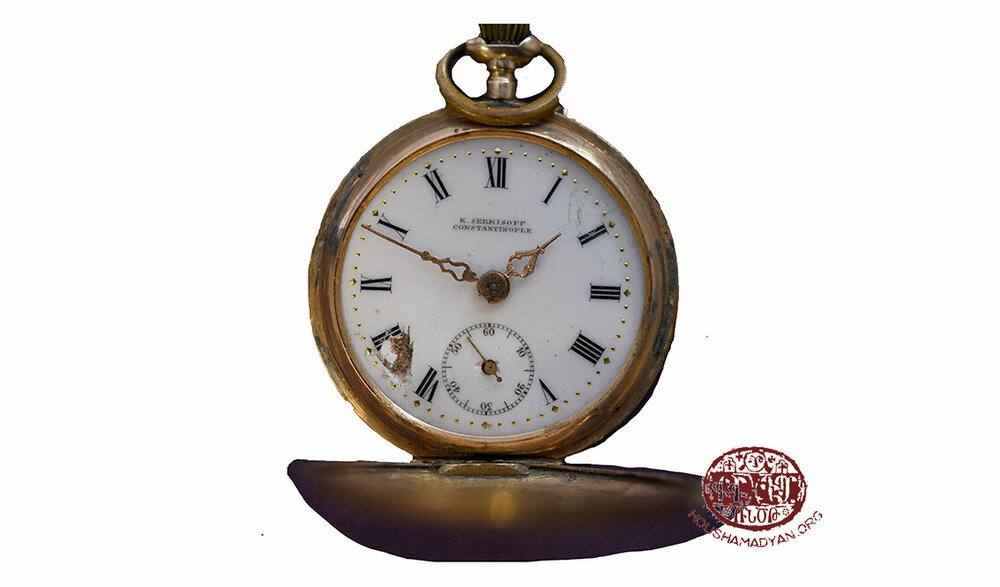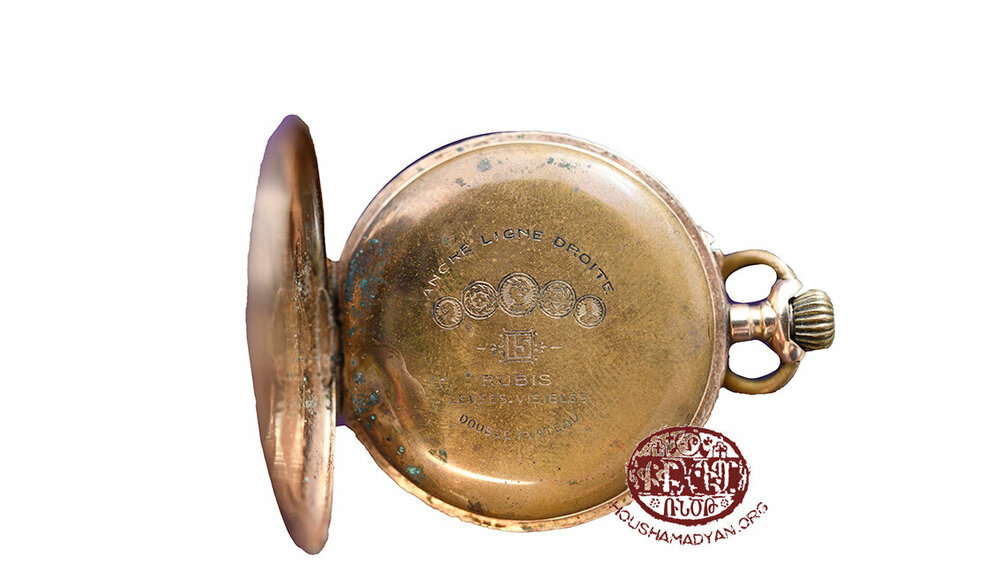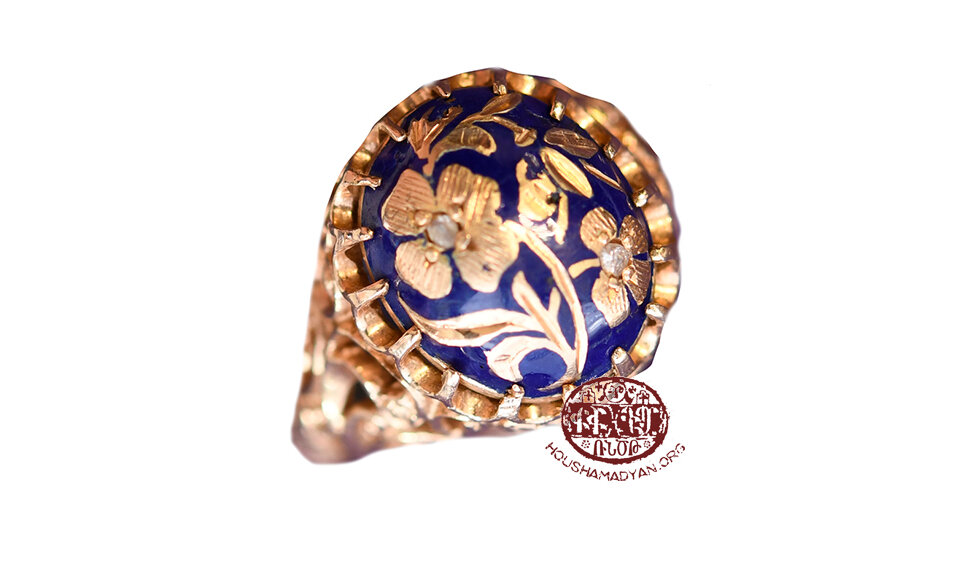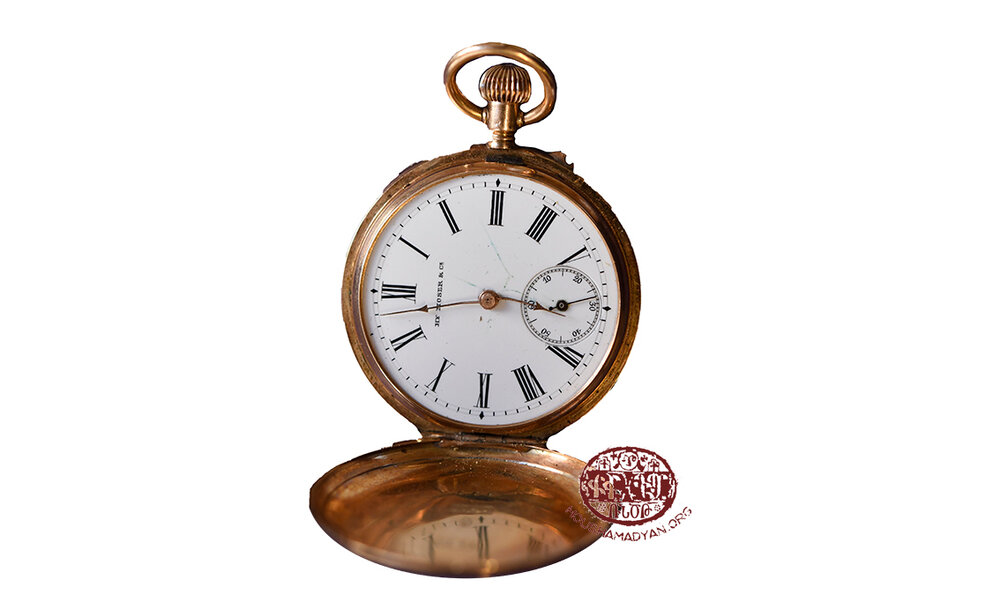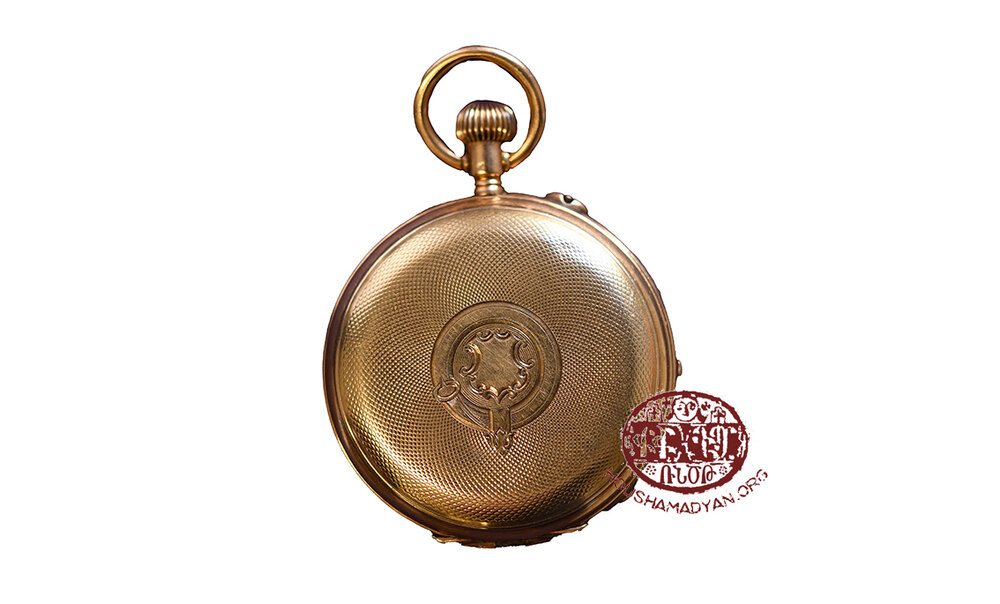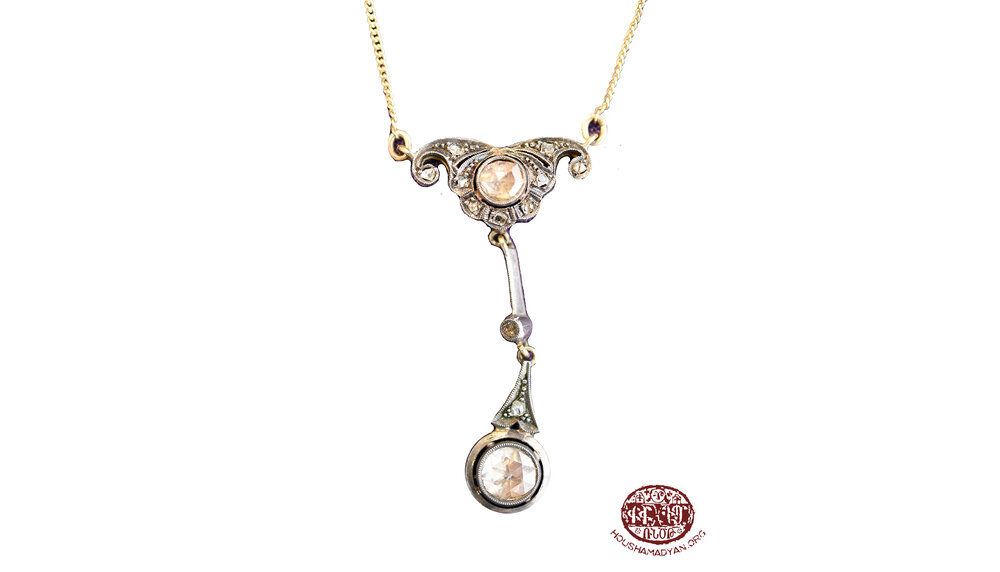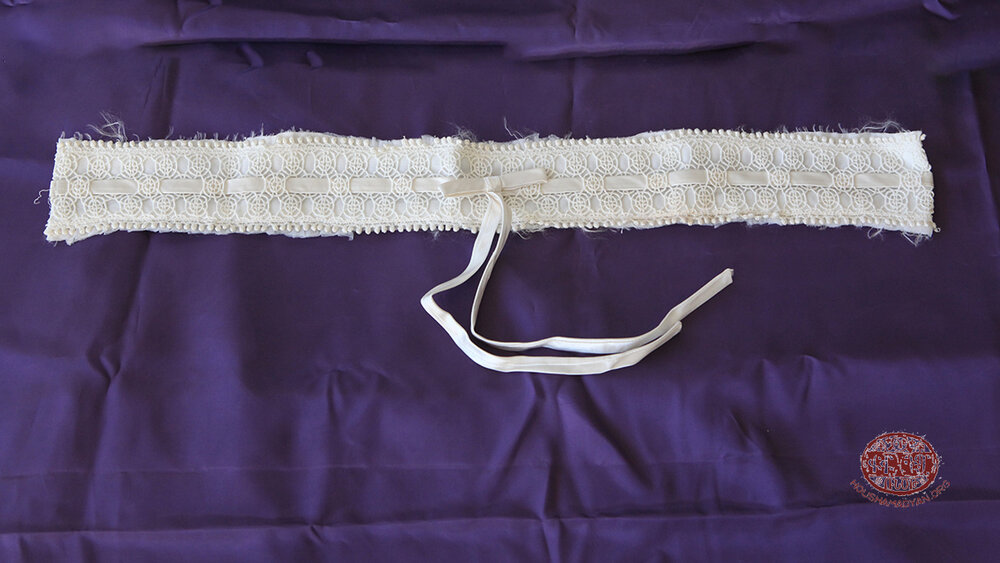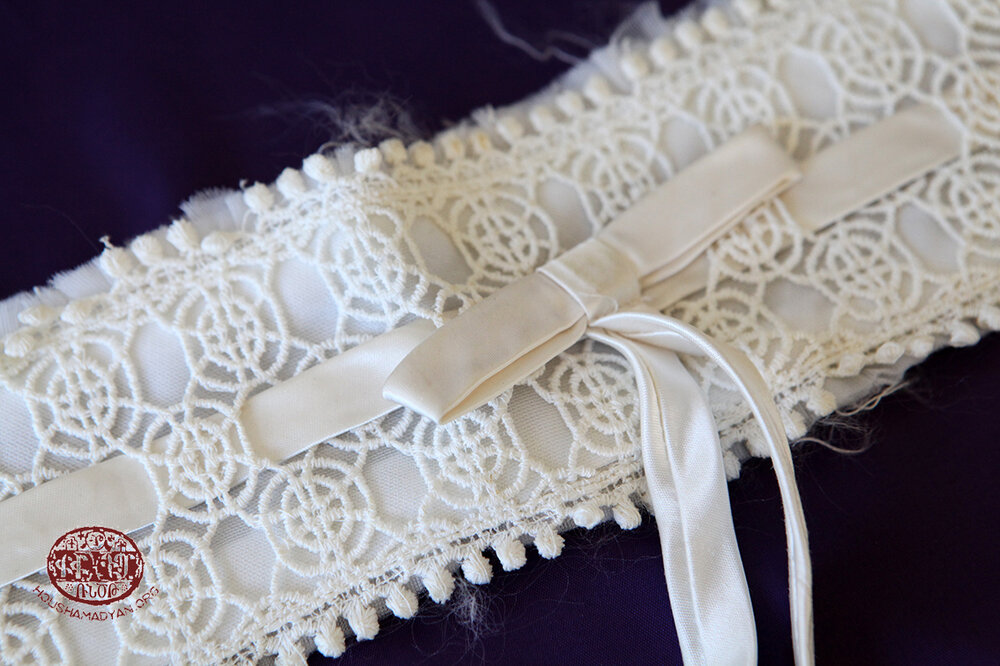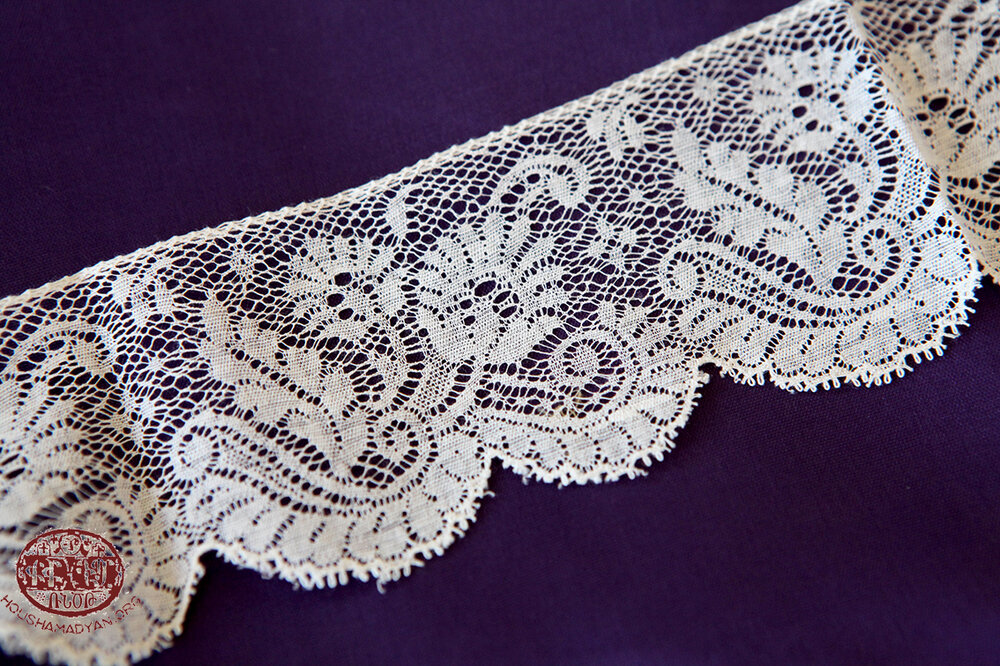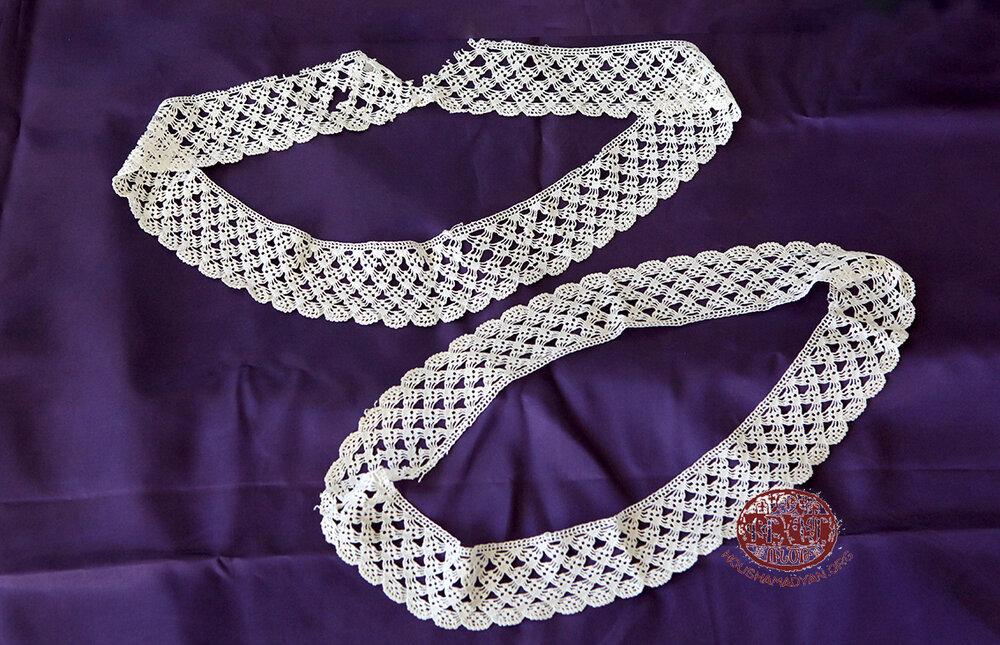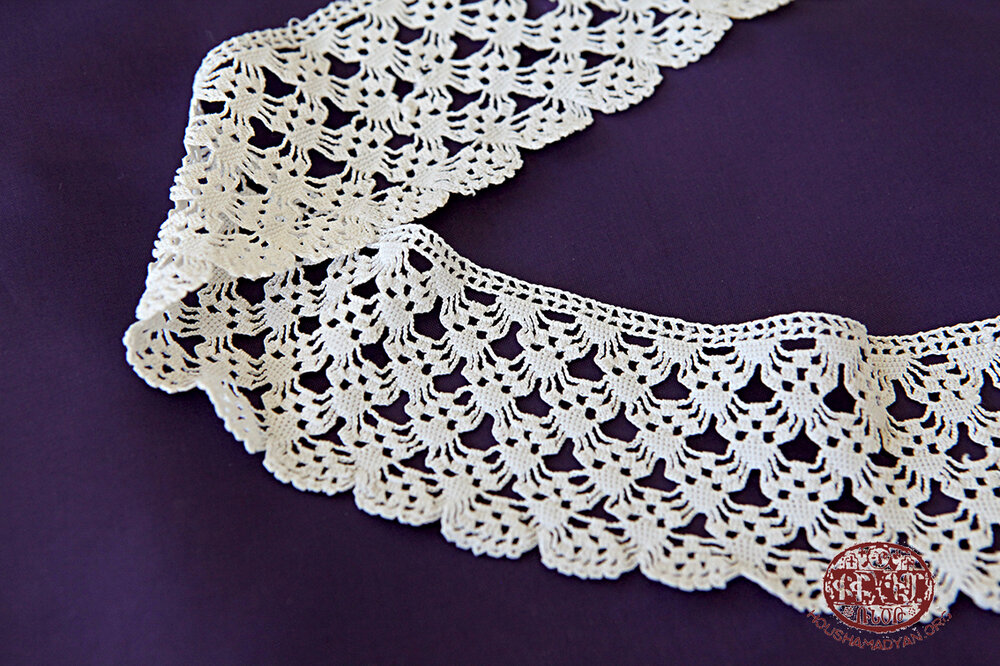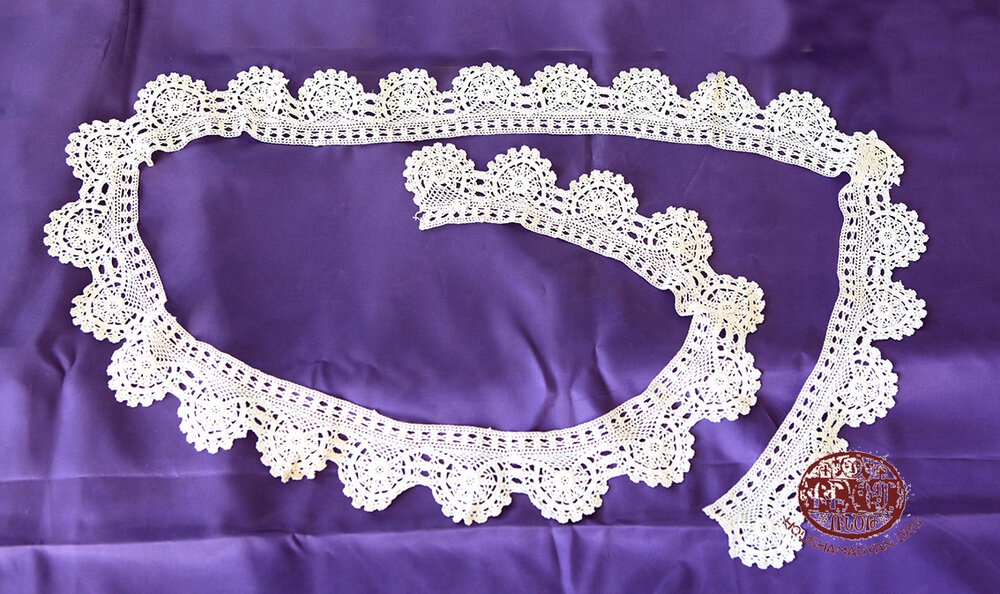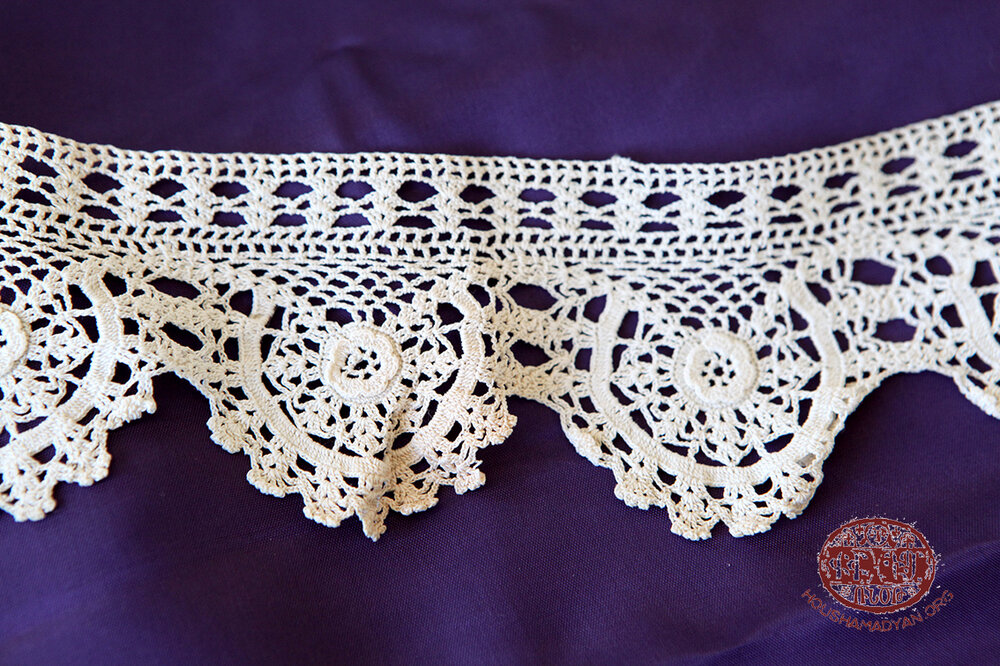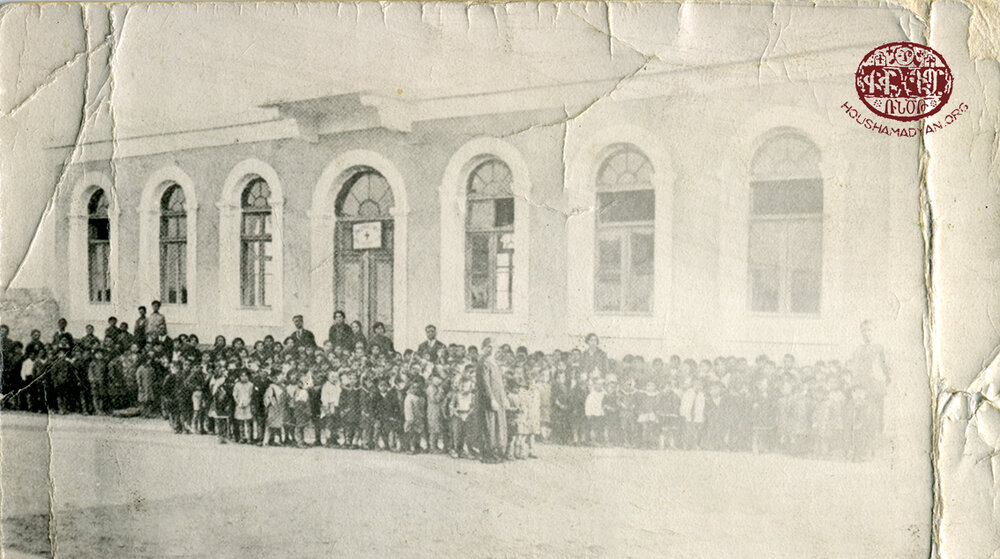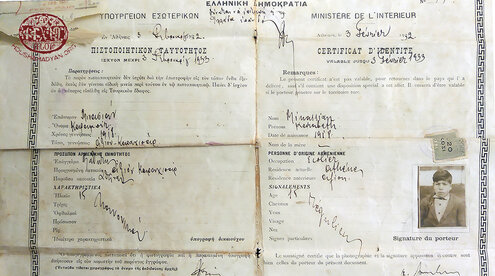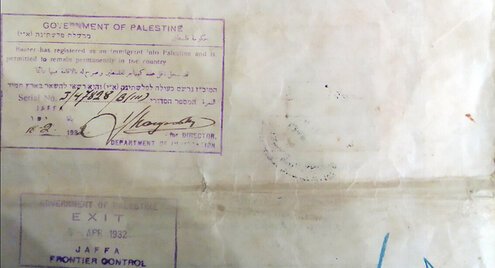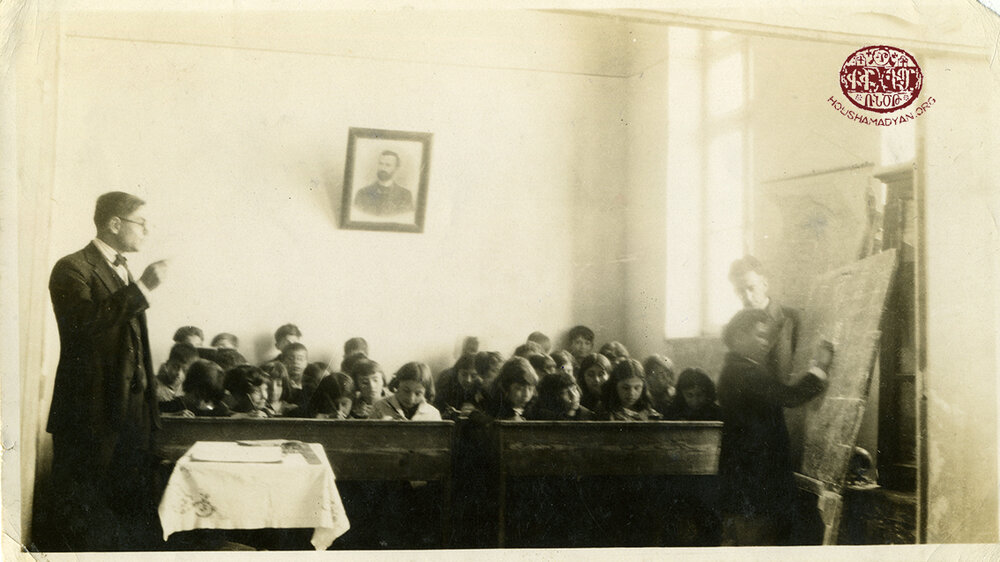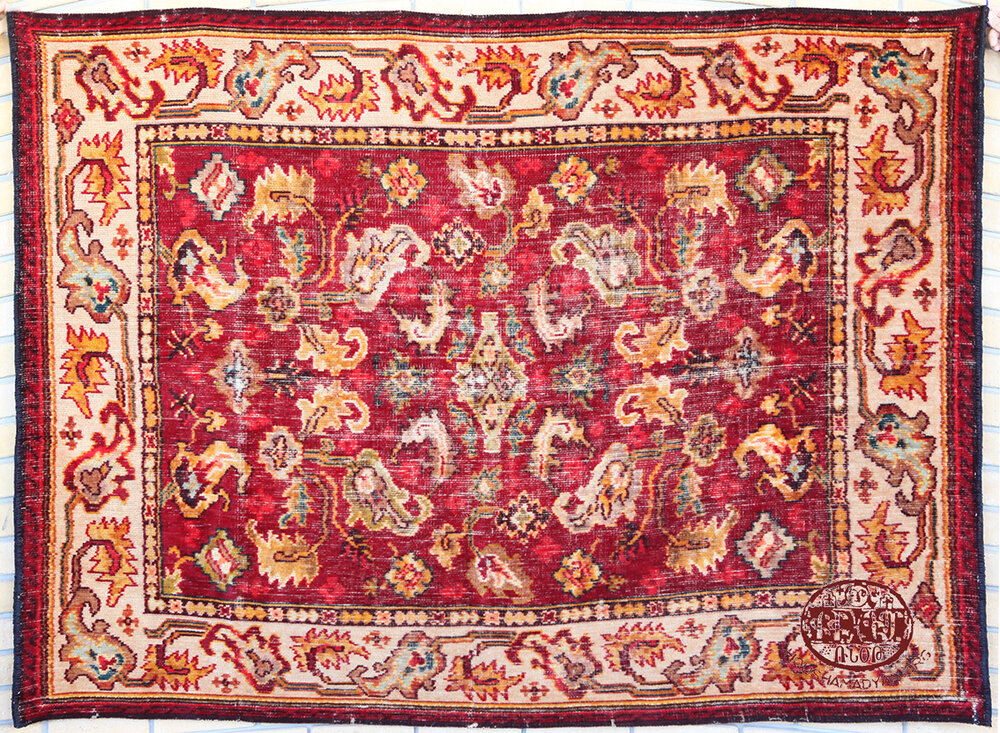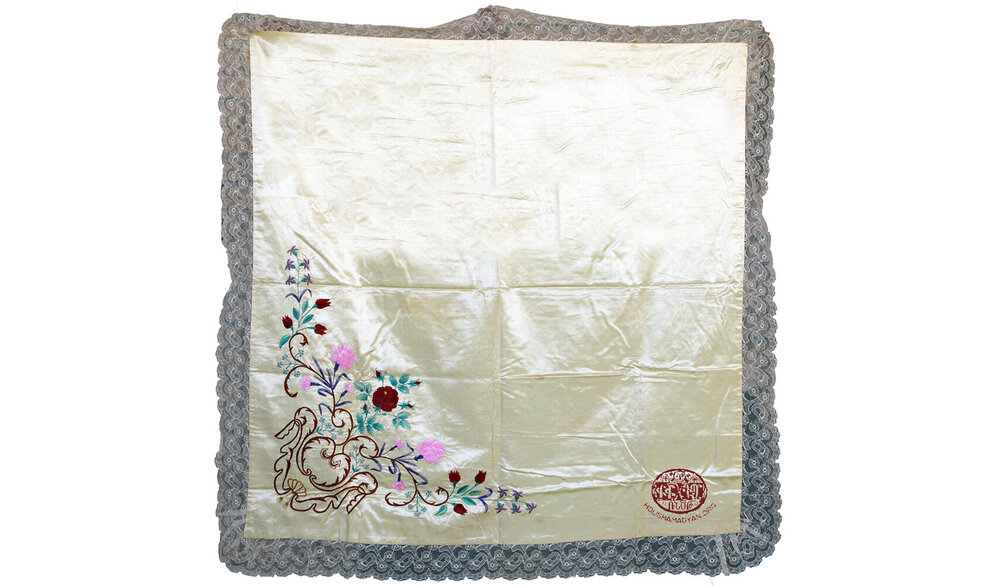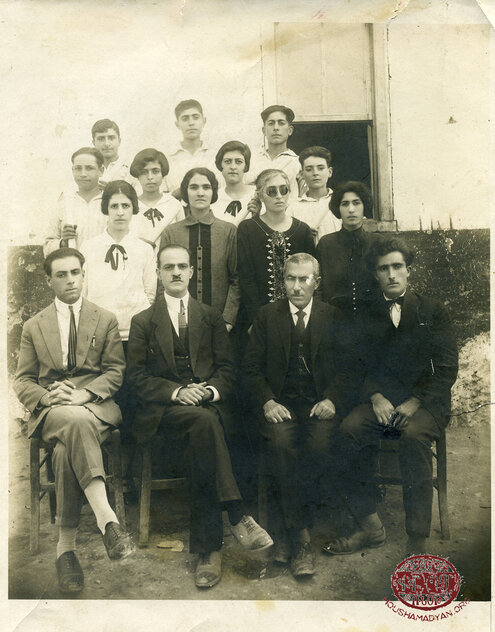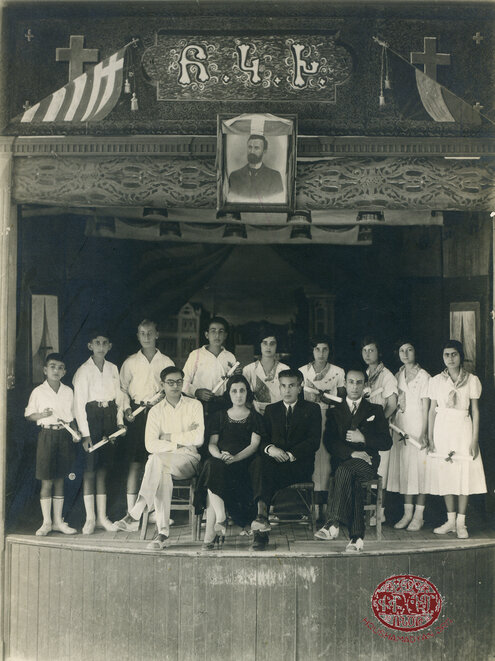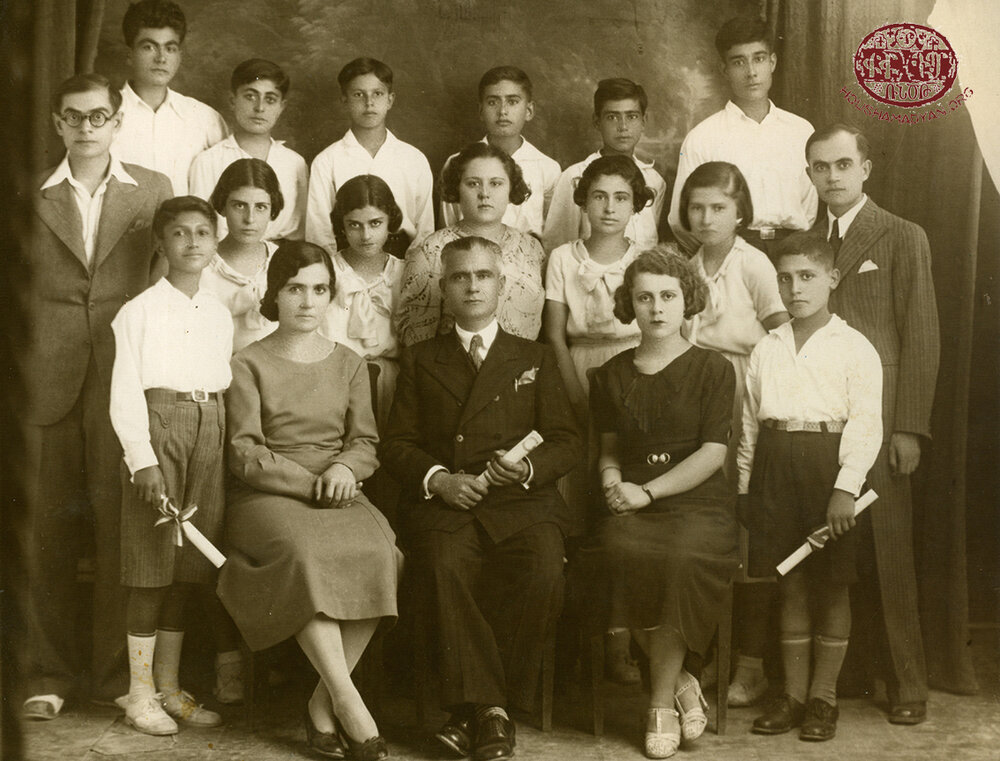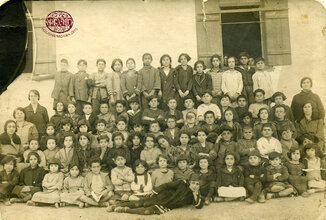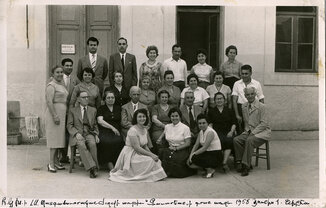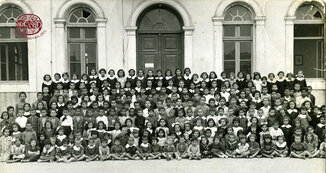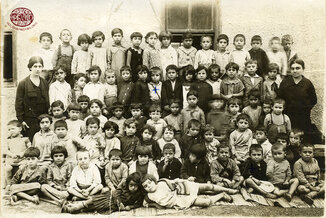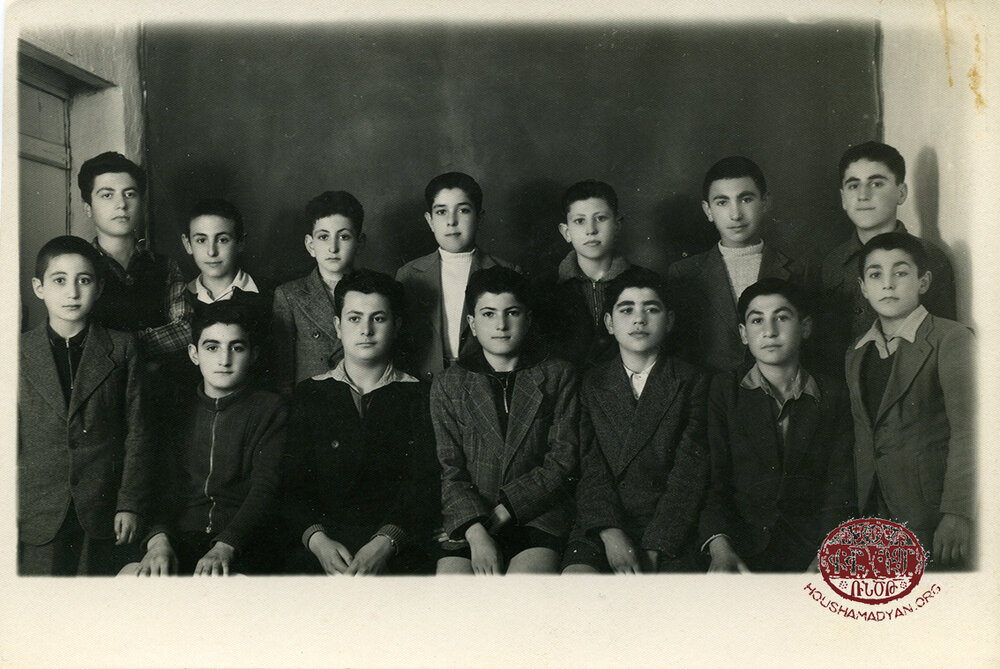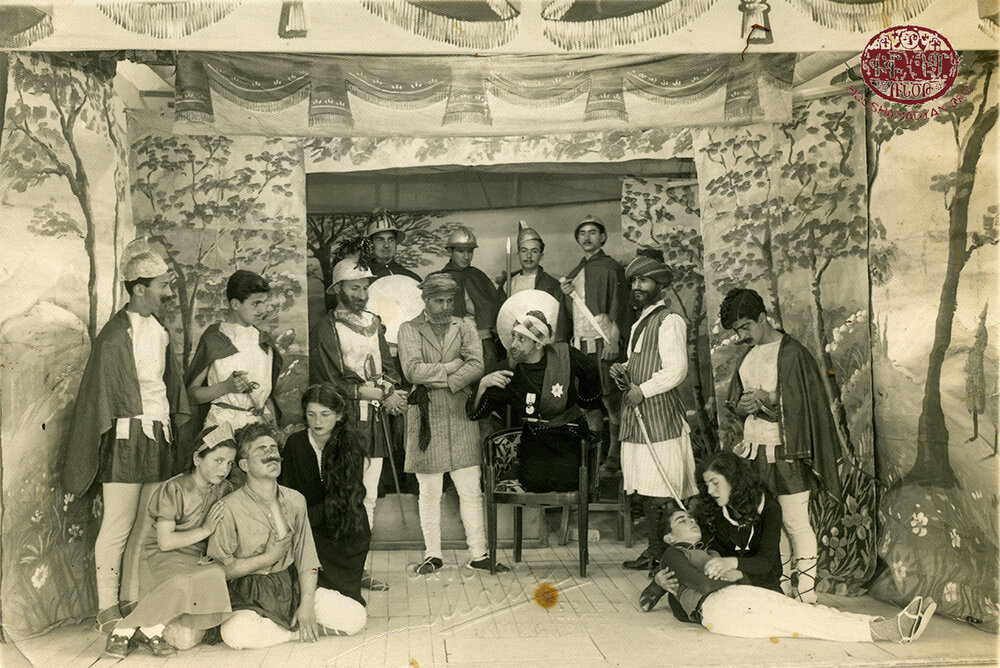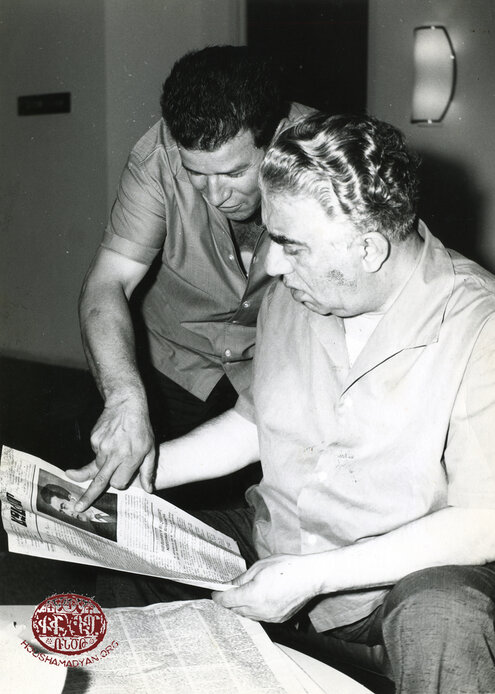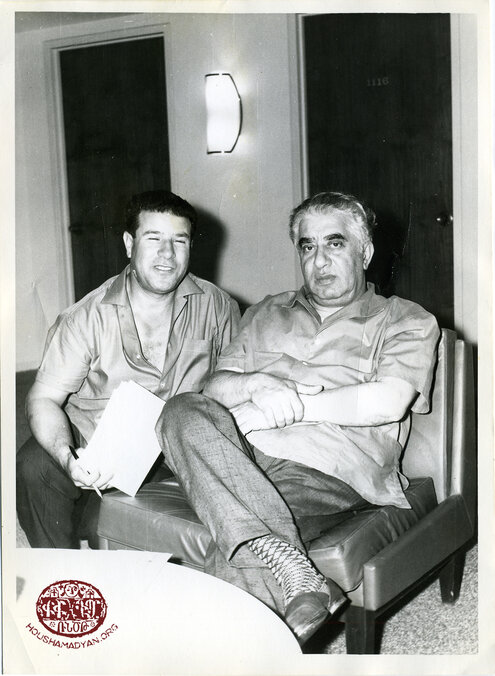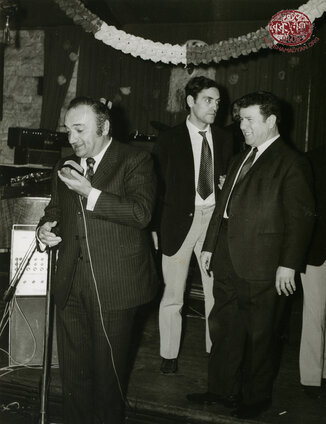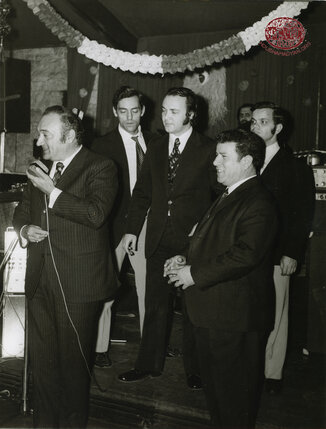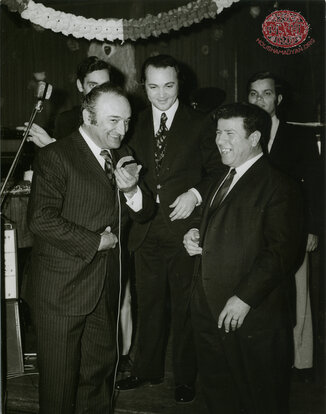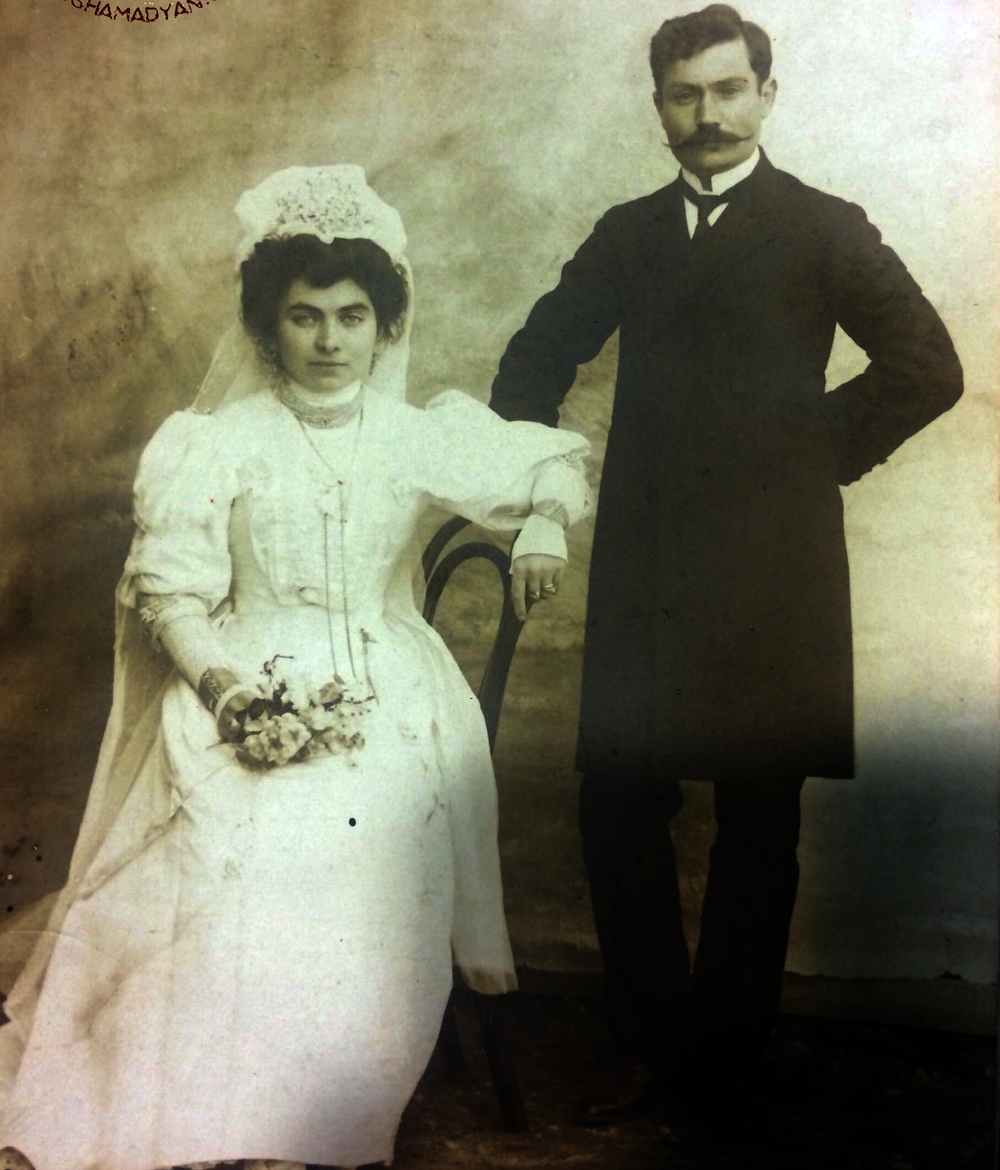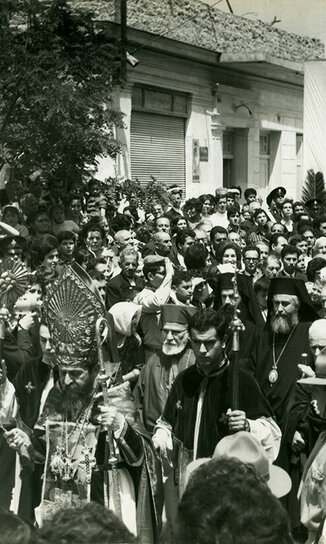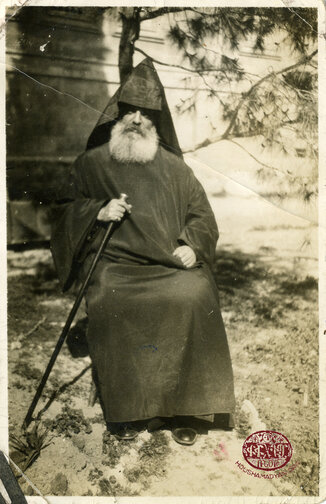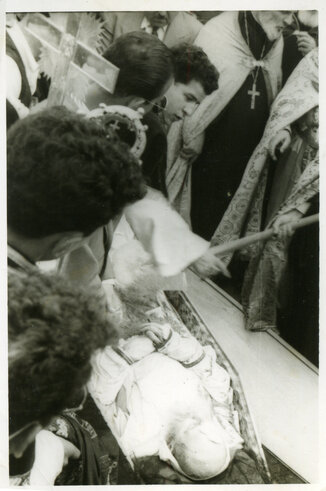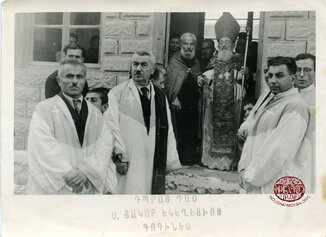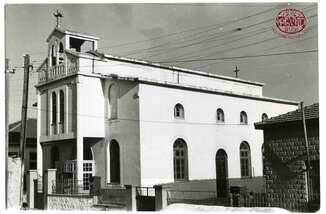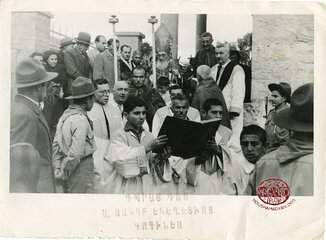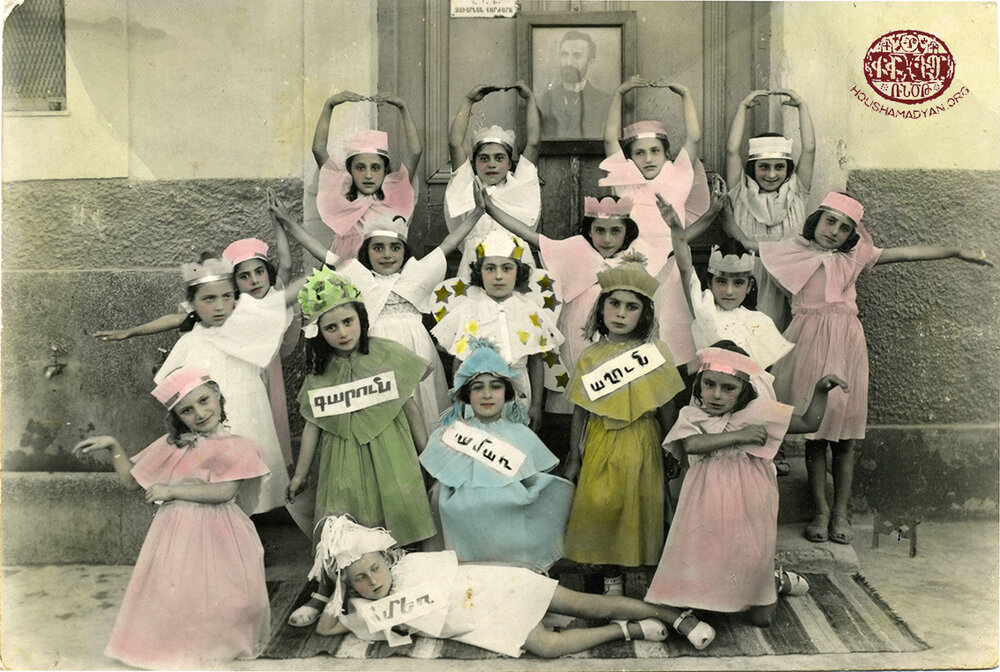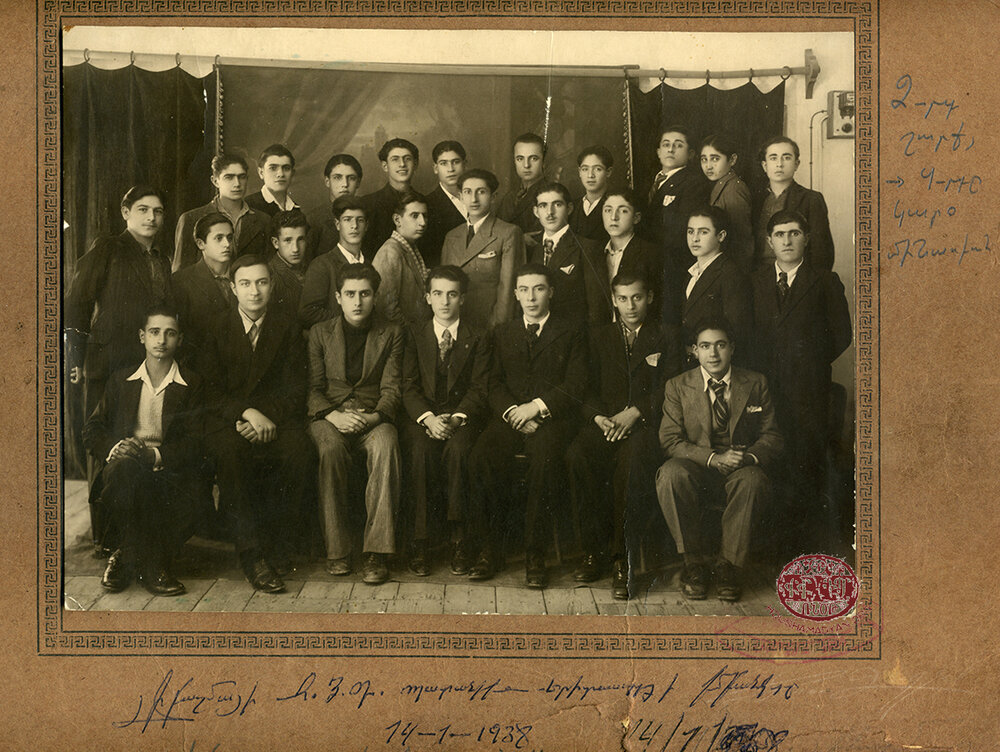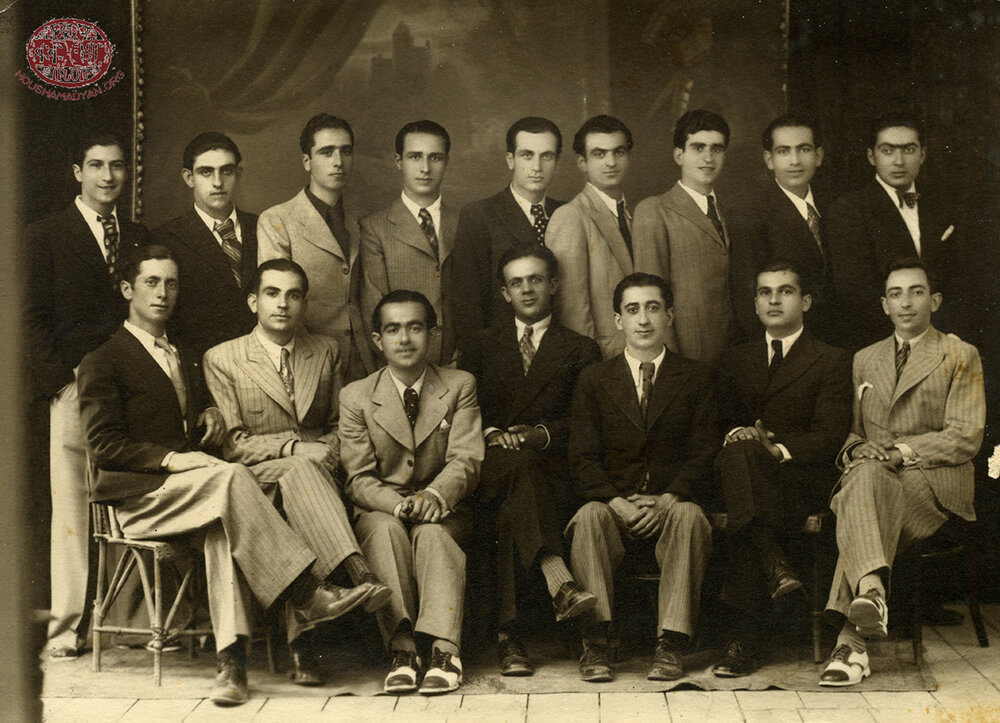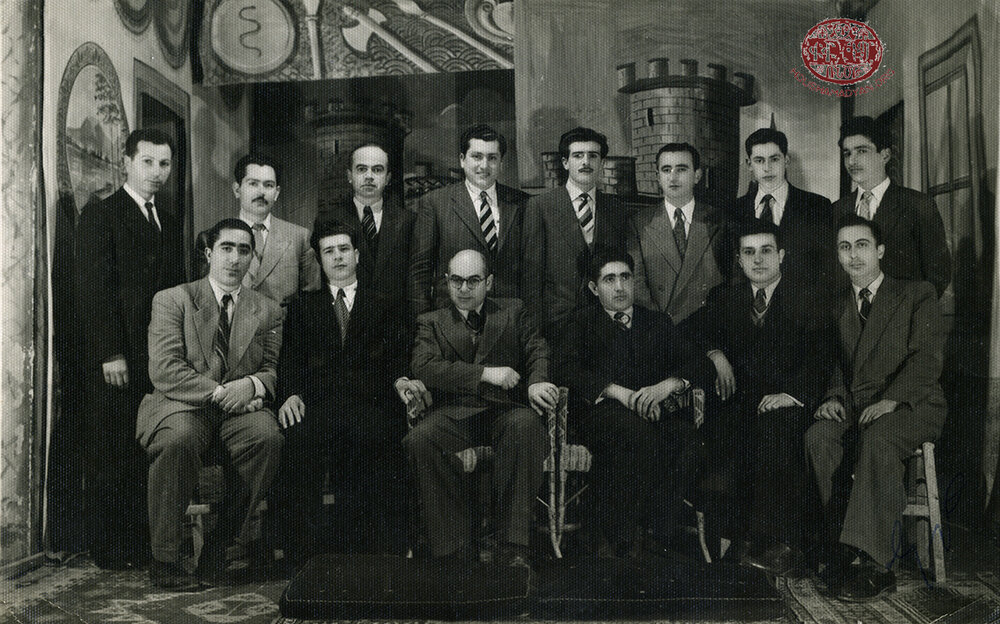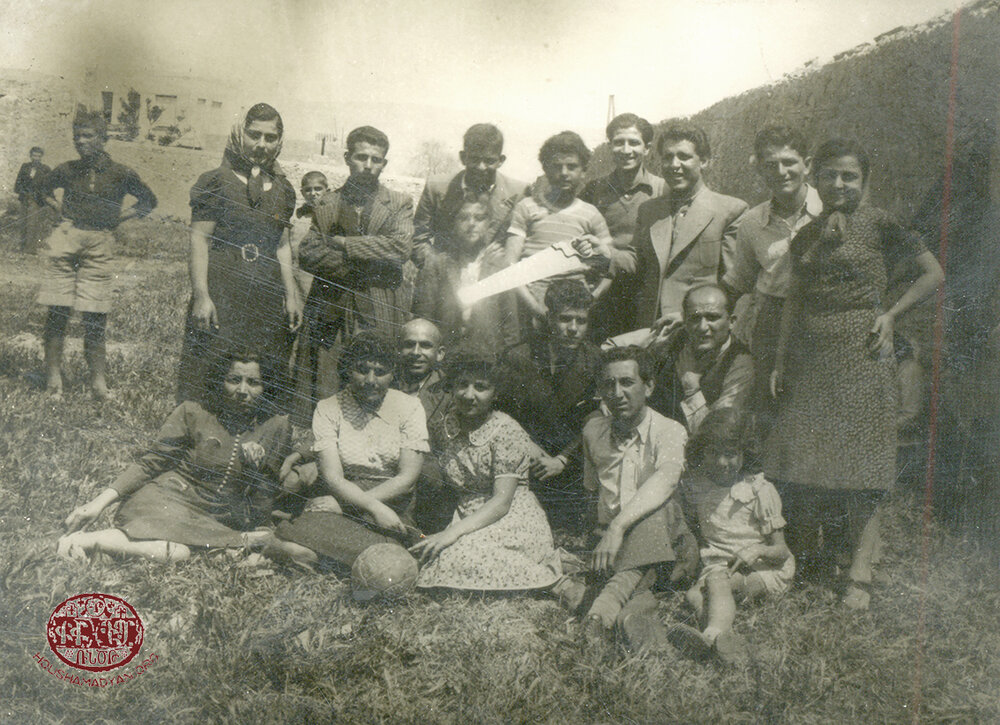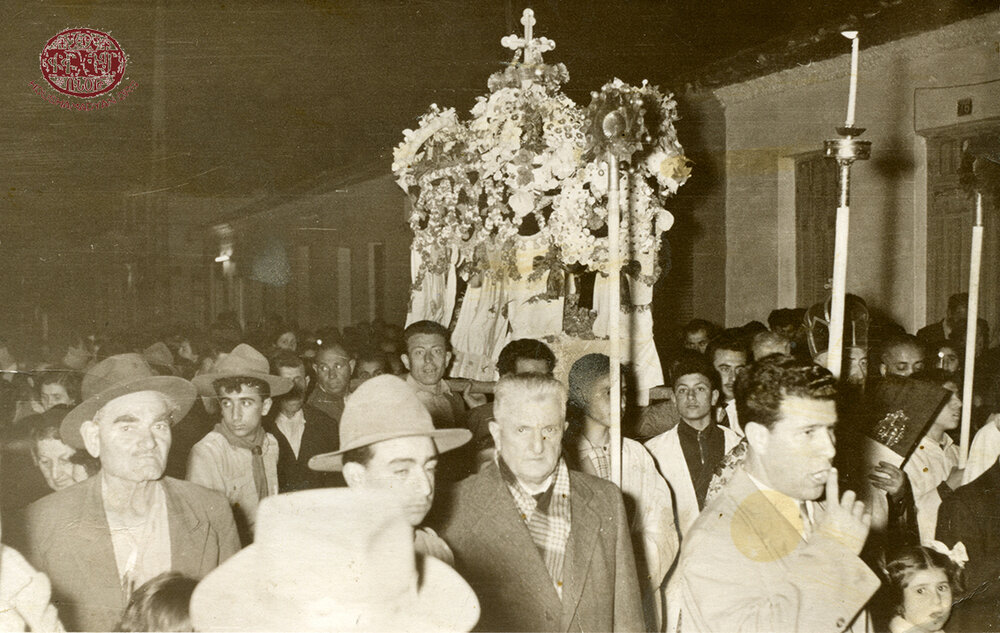Minassian Family Collection – Kokkinia, Greece
30/12/22 (Last modified 30/12/22) - Translator: Simon Beugekian
This page was prepared collaboratively with the “Armenika” periodical of Athens.

The Minassian Branch (Afyonkarahisar, Adana, Izmir)
Garo Minassian, Hayganoush and Takouhi/Quin’s father, was born in Afyonkarahisar in 1921. He was the son of Markar and Hayganoush. A significant portion of the photographs presented on this page are from his personal album. These photographs not only portray family events and occasions, but also chronicle Greek-Armenian community life from the 1920s through the 1960s – class photographs, school events, celebrations, visits of notable personalities to Greece, church ceremonies, theatrical performances, etc.
Garo’s father, Markar, was born in Afyonkarahisar. His wife, Hayganoush, was from the Adana area. Markar was a carpenter by trade. His expertise was the carving of designs and symbols on items of furniture. In the course of his work, he often traveled to the Adana area, where he spent extended periods of time.
We presume that it was on one of these visits that Markar met Hayganoush, whom he later married. The couple had six children: Srpouhi, Takvor (born in 1908; died in 1971), Hripsime (died in 1985), Garo (1921-1995), and Onnig (born in Greece). Takvor was born in Adana. Markar recounted to his children that the family had survived the 1909 massacres of Adana. This means that Markar and Hayganoush were in Cilicia at that time. We presume that it was after the massacres that they moved to Afyonkarahisar, where Hripsime, the couple’s daughter, was born.
Markar had eight siblings. We do not know their names, but we know that in 1915, they were all deported with their families and were lost without a trace. Markar and Hayganoush, alongside their children, also experienced the full horrors of the deportations and massacres. At the end of the First World War, the family was in Smyrna (Izmir). In that city, they lived in the Greek neighborhood, where they shared a courtyard with their Greek neighbors. In Smyrna, Markar revived his career as a carpenter and was soon a sought-after craftsman across the city.

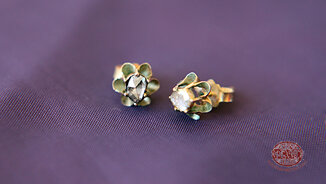
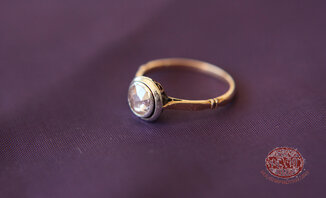
In 1922, in view of the withdrawal of Greek forces from Izmir and its occupation by Turkish forces, the Minassian family, like many others, decided to flee to Greece. When Turkish soldiers entered the city, they began arrested adult Christian men. Markar, too, was arrested, and held as a hostage. Meanwhile, the rest of the family faced their own challenges boarding the ship out of the city. In the chaos at the harbor, Turks attempted to kidnap Srpouhi, but failed. Unfortunately, she died a short time later, on the way to Greece. Throughout this time, the infant Garo was tied to Takvor’s back. Eventually, the family boarded the ship. Their first stop was the city of Thessaloniki, after which they would continue their journey to the port of Pireas near Athens. It was only after the ship had left Thessaloniki that the family noticed that Garo was no longer tied to Takvor’s back. They reached Athens without Garo.
It was an untenable situation. Part of the family had reached Pireas as refugees, but their husband and father was still in Izmir. They had to start over from scratch in Greece, while at the same time, they had to find Garo. They settled down in the area of Lipasma near Pireas, where a huge refugee camp had been hastily erected, with a large population of Armenians.
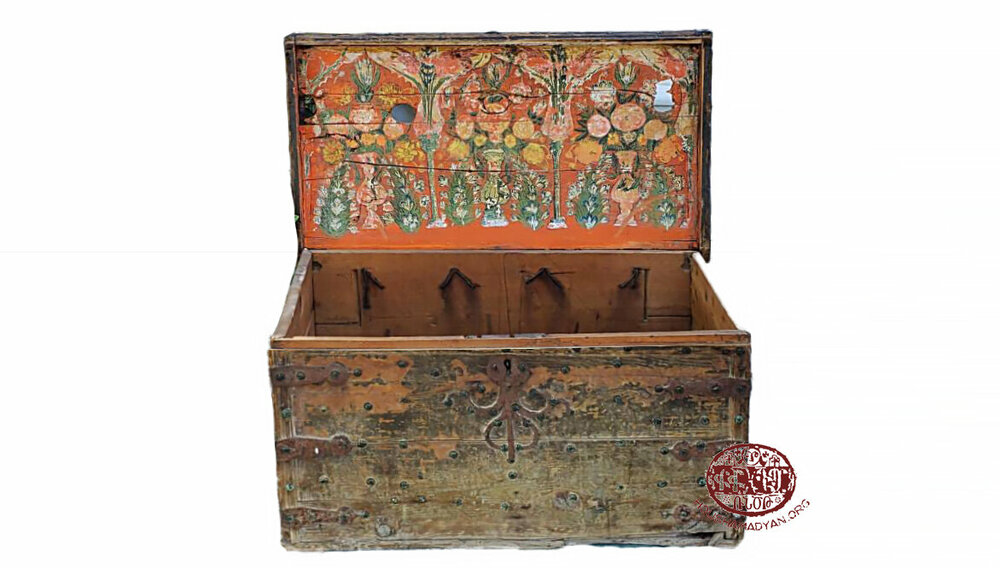

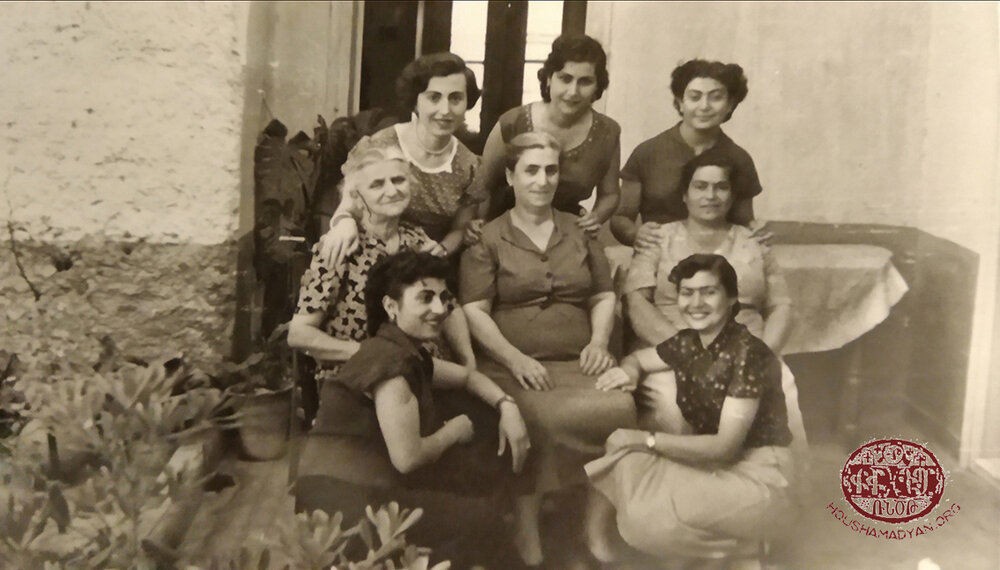
Lacework used to decorate the hems of dresses. Hagop Palandjian was an expert lace maker, having learned the craft in Gallipoli. He practiced this trade after his family settled down in Kokkinia. His work was highly sought on the market. These photographs feature examples of his work.

In Garo’s case, fortune smiled on the Minassian family. Their Greek neighbor from Izmir, a woman, had traveled with them on the same ship, and had disembarked in Thessaloniki. There, she saw Garo in the company of a couple. She knew Garo well, as the two households had shared a courtyard in Izmir, and she had often played with him. This woman made the trip to Lipasma to inform the Minassians, and to give them the address at which they could find Garo. He had been abducted by a Greek sailor, who was married but childless.
Hayganoush, taking Takvor with her, and accompanied by the Armenian priest of the refugee camp, departed for Thessaloniki. This journey occurred about six months after Garo’s abduction. Takvor bore a strong resemblance to Garo. The family entered the home in which Garo lived, but the woman of the house insisted that he was her son. To prove her claims, Hayganoush cited a birthmark on Garo’s back and produced Takvor, who looked so much like his brother. Eventually, Hayganoush handed over a valuable ring of hers, grabbed Garo, and ran out of the house.
Around this time, Markar, who was still a prisoner, lost one of his legs. He lived as an invalid until his death in 1937. In 1923, after the signing of the Treaty of Lausanne, a prisoner exchange was arranged between Greece and Turkey. Markar was one of the prisoners who were released. He arrived in Greece and rejoined his family.
The Minassian family continued living in the refugee camp of Lipasma. However, during the Second World War, when Greece was occupied by Nazi forces, the British Royal Air Force heavily bombed German military targets across Pireas. The explosions of stored ammunition and military supplies resulted in many dead and wounded among the city’s civilians, in addition to widespread destruction. The refugee camp of Lipasma was among the areas destroyed. Most of the refugees found shelter in the Kokkinia, Tambouria, or Dourghouti/Fix neighborhoods of Athens.
The Minassian family settled down in Kokkinia (Nikaia). At first, like many other Armenian families, they lived near the Zavarian Armenian school (very close to the Saint Hagop Church). The area soon became a refugee camp. Markar continued practicing carpentry, and his work continued to be highly praised. For example, we know that he repaired and renovated the furniture of one of Athens’ well-known hotels, the Pentelikon.


One of Markar and Hayganoush’s sons, Takvor, married Veron in Greece. The couple had two children, Srpouhi and Maida. Takvor’s first daughter was named Srpouhi after his sister, who had died during the family’s journey from Izmir to Greece.
Hripsime married Hagop Palandjian (born in 1912 in the Adana area), who lived in France. During the First World War, Hagop’s older brother, Aram, had served in the Armenian Legion, a auxiliary unit of the French Army. Hagop and Hripsime’s relationship began when they exchanged photographs by correspondence, a common practice at the time. Hagop then traveled to Greece and met Hripsime, and the two decided to marry. By then, Markar had already passed away, so Hayganoush moved to France with Hripsime, and lived there for the rest of her life. Hripsime and Hagop did not have any children. They lived in Tarare, near Lyon.

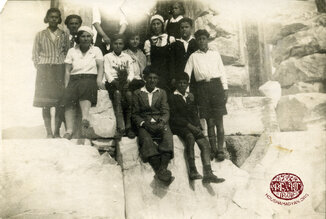
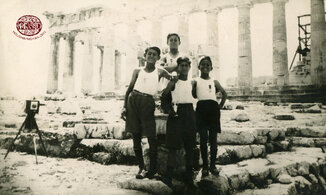
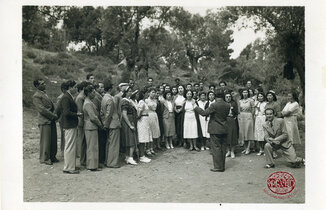
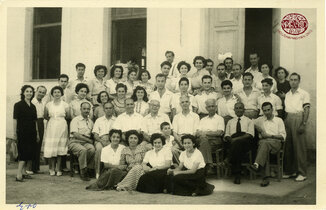
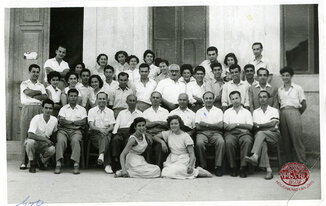
Onnig enlisted in the Greek army. At the time, the law stipulated that any Armenian who served in the Greek army would be granted Greek citizenship. He enlisted in the early 1950s, just as the Korean War (1950-1953) began. Greece sent a small force to Korea. During the fighting, Onnig was wounded. After the war, he and another Greek soldier, a friend of his, decided to move to Brazil. There, Onnig met Yughaper, whose family had lived in the Dourghouti neighborhood of Athens before emigrating to Brazil in 1947. Yughaper’s family ran a grocery store in Brazil. The couple had two children, Markar and Ricardo Jose.
In Greece, Garo married Koharig Palandjian (1928-2001), who was born in Kokkinia.
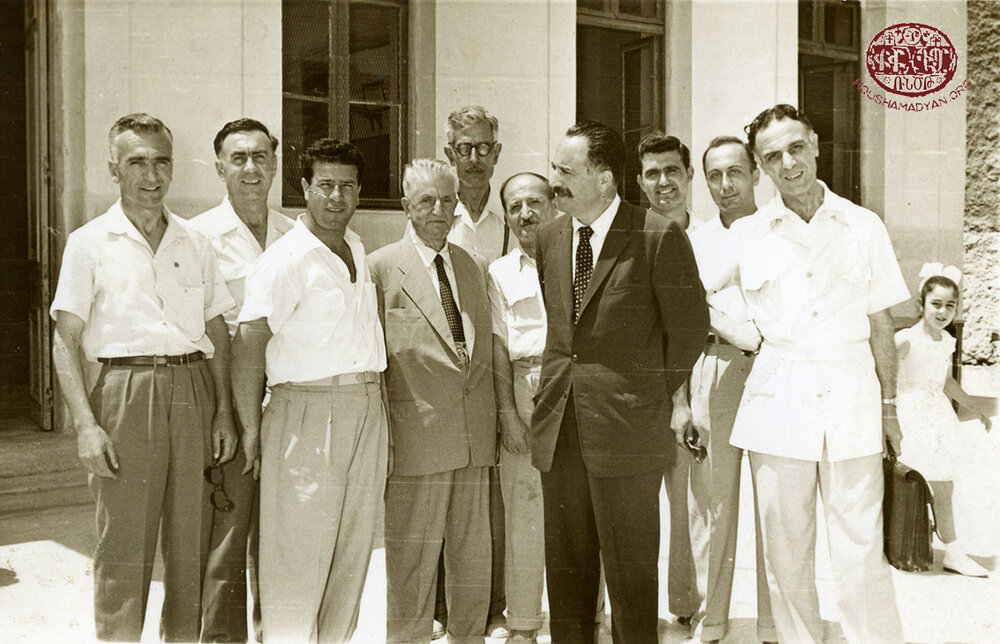
February 21, 1971. A ball organized in Athens by the Armenian Blue Cross on the occasion of a visit by French-Armenian director Henri Verneuil (Ashod Malakian). Henri Verneuil is the man holding the microphone, and on his right is Garo Minassian, smiling. Henri Verneuil was born in Rodosto/Tekirdağ.

The Palandjian Branch (Gallipoli, Rodosto/Tekirdağ)
Koharig was the daughter of Hagop Agha Palandjian (1878-1968) and Takouhi (nee Parseghian; 1904-1980). Hagop was born and lived in Gallipoli/Gelibolu. His family’s surname had initially been Krikorian, but had been changed to Palandjian. Hagop was a merchant and kept about 40 horses. He also made and sold horse saddles. In other words, he was a palandji, Turkish for “saddle maker.”
Hagop’s wife, Takouhi, was born in Rodosto/Tekirdağ. She had come to Gallipoli as a bride.
During the First World War, Hagop was conscripted into the Ottoman army. As a cavalry officer, he served on the Gallipoli Front, which witnessed some of the most brutal fighting in the war, and where the allies attempted to land in 1915. During the fighting that followed the allied landings, Hagop saved the life of a high-ranking Turkish officer. In the process, he was wounded in the leg. Later, Hagop would be decorated by the Ottoman army for his actions. From that day on, Hagop and this officer shared a close friendship, which lasted until the exodus of the Armenian population of Gallipoli. Many years later, Hagop’s granddaughter, Quin Minassian, wrote an article that explored the two men’s friendship.
In October 1922, shattered Greek forces began retreating all along the Anatolian front. The eventual Turkish victory seemed inevitable. Just then, Hagop Palandjian’s friend, the Turkish officer, appeared in Gallipoli. He confided to Hagop that the Turkish authorities were about to give the Armenian population of the city an ultimatum to leave. The Armenians would have very little time to organize their departure, which would have catastrophic consequences for the community.
Hagop Palandjian immediately relayed this information to the city’s wider Armenian community. A meeting was convened, and though some people were skeptical, the community decided to rely on Hagop’s information and to prepare to leave the city without waiting for an official order. The Armenians of Gallipoli boarded a ship that took them to the Greek island of Cephalonia. Later, most of these refugees moved to the Kokkinia (Nikaia) area of Athens, where refugee camps for Armenians and Greeks had already been established.
Some of Hagop’s relatives, instead of fleeing from Gallipoli to Greece, decided to seek shelter in Istanbul. Those who made it to Greece included Hagop’s sister, Arous, and her family. She was married to Alexan Aydunian, and had two sons, Hovhannes and Martin. In Greece, she and her family settled down in Megara, 30 kilometers west of Athens.

A Short Biography of Garo Minassian
Garo Minassian was born on September 14, 1921, in Afyonkarahisar. He attended the primary school founded by the Very Reverend Haroutyun Adjemian in Lipasma (Greece). From 1931 to 1933, he attended the Jarankavorats School in Jerusalem.
In 1937, upon his father’s death, Garo was forced to abandon his studies and begin working. He launched a career in the leather trade. He would buy raw, untreated animal hide from the countryside, and then export it abroad. He was also active within the Armenian community in Athens and was a member of several Armenian organizations.
While living in Lipasma, Garo was member of the local Armenian Revolutionary Federation (ARF) teen and youth wings. In 1938, he became a sworn member of the party. He also served as an acolyte at the Lipasma Armenian church.
In 1941, when the family moved to Kokkinia, Garo became the head acolyte of the Saint Hagop Church. From an early age and until his death, he contributed to the Azad Or Armenian newspaper.
He married Koharig Palandjian on April 27, 1958. They had two daughters, Hayganoush and Takouhi/Quin.
Garo was a member of the executive board of the Kokkinia chapter of the Armenian General Athletic Union (HMEM). He was a member of the local ARF committee, and later a long-time member of the ARF Leadership Board of Greece. He was also a member of the executive board of the Armenian Blue Cross of Greece, and the chairman of the board of trustees of the Armenian nursing home.
He enthusiastically contributed to the efforts aimed at establishing an embassy of the Republic of Armenia in Athens.
Garo Minassian died in 1995.

